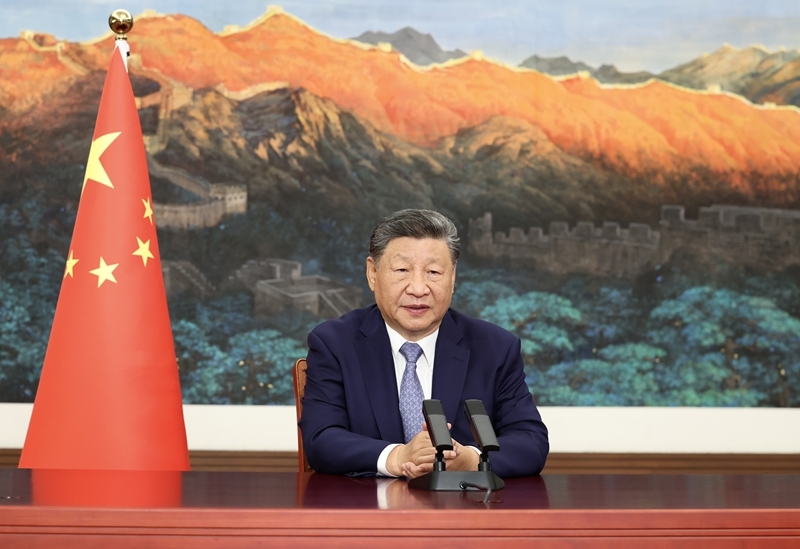
China pledges modest 10% emission cut by 2035 as COP30 nears. (Photo: China’s Foreign Ministry)
Nearly 100 countries at the United Nations Climate Summit announced that they would finalize or set new Nationally Determined Contributions (NDCs) before COP30 this November.
China, the world’s largest carbon emitter, pledged for the first time to adopt an absolute reduction target, aiming to cut emissions by 7–10% from its peak. However, experts argue that China’s target is too conservative. Meanwhile, most major Southeast Asian countries have yet to release updated NDCs.
China pledges emission cuts of up to 10%
UN Secretary-General António Guterres told world leaders that the drive for climate action comes not only from science but also from law, economics, and people. He noted that global investment in clean energy is already double that in fossil fuels, with clean energy delivering cheaper electricity at record speed—demonstrating its competitiveness and inevitability.
According to the UN, around 100 Paris Agreement signatories have already submitted or announced updated NDCs, representing two-thirds of global emissions. For the first time, major economies including China unveiled economy-wide reduction targets covering all sectors. With tools for industrial decarbonization and resilience in place, the biggest challenge now lies in scaling up.
Chinese President Xi Jinping, speaking via video, announced that China would cut emissions by 7–10% from peak levels by 2035. This marks China's first time to commit to a specific reduction target, though Xi did not specify the exact peak year. In 2021, he pledged to reach peak emissions this decade and achieve carbon neutrality by 2060.
Many analysts believe China’s emissions already peaked last year or this year. Nevertheless, experts argue that the pledged maximum 10% reduction is insufficient to keep global warming below 1.5°C. According to the Center for Research on Energy and Clean Air (CREA), China would need to cut emissions by 30% from 2023 levels to align with that pathway.
CREA’s lead analyst Lauri Myllyvirta suggested that with rapid clean energy deployment, electrification, and structural economic shifts, China could realistically achieve a 30% reduction by 2030. He characterized the 7–10% target as a “guarantee,” with any overachievement serving as a demonstration of ambition.
EU to submit new NDC before COP30, ASEAN lags in updates
Another key focus was the European Union. As expected, European Commission President Ursula von der Leyen announced that the EU would cut emissions by 66–72% from 1990 levels by 2035 and officially submit the target before COP30.
The target is seen as a “statement of intent” rather than a finalized commitment, since internal consensus has yet to be reached. In July, the European Commission proposed a 90% reduction by 2040, but this must still be approved by both the European Parliament and the European Council.
In Southeast Asia, according to the UN’s NDC registry, only Singapore has updated its target this year, while other major countries have not submitted new data. At the summit, Indonesia reiterated President Prabowo Subianto’s 2060 net-zero pledge, while Vietnam called on nations to deliver timely climate finance commitments to ensure a just transition.
Source: UN、Climate Home News、Bloomberg、BBC、Vietnam+
.jpg)


